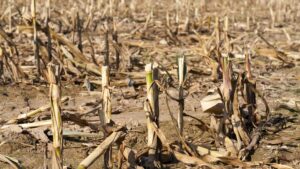This is part one of a three part series on the importance of soil health. Part one focuses on the chemical components of soil health.
“Just like seeds and crop inputs, soil health directly impacts a grower’s success,” stated Dr. Nigel Hoilett, a professor at the Northwest Missouri State University School of Agricultural Sciences.
Dr. Hoilett has done extensive research on soil science and microbiology. He explained that the agricultural community is only fully starting to understand how soils function. That’s why he has focused his research on increasing the industry’s knowledge of interactions between soil microbes and land use changes.
“The aspect of soil health is something that has been partially ignored over time,” Hoilett said.
But it can’t be ignored any longer.
“Over the last 50 years … our soil has lost some of the properties that allow the soil to give us a good crop and to protect the environment,” he explained. “If the soil continues to lose its nutrients, what you find out is that crop productivity is going to decrease and so you would need more inputs to get the same amount of returns from the crop.”
Growers, are constantly searching for ways to produce more with less – healthy soil can give their crops that extra boost.
“We need that soil at its best for us to get the type of crop and the type of yield that we need if we are to survive as an entity,” Dr. Hoilett said.
The Big Picture
In the past, when people looked at soil, they only focused on one or two aspects, such as its physical components, Dr. Hoilett said. However, he explained that we should look at soil as an entire ecosystem.
“You have to look at it from a holistic standpoint and that includes the chemistry, the physical aspects and the biology of the soil,” he said, adding that all three work together, and the best soil management practices focus on improving all three.
Let’s take a closer look at the chemical component.
Soil chemistry involves the composition and parent material of the soil, soil pH, element adsorption to clay surfaces and organic matter and soil salinity. Three major aspects of chemical soil degradation are soil nutrient mining, salinization and pollution. Chemical indicators are sensitive to soil management and natural disturbances. Tillage practices may change the levels of pH as well as nutrient content.
The chemical components and properties of the soil affect many reactions and processes occurring in the soil environment. For example, soil pH controls the solubility and mobility of heavy metals and nutrients such as phosphorus.
When it comes to measuring and managing the chemical components of soil, Dr. Hoilett recommends that growers get a basic soil test done to get an idea where they are and what management system needs to be put in place to get their crops to grow as well as possible.
Once a test has been done, growers can implement a plan to improve soil health and increase crop productivity.
“There are a number of practices farmers can use to enhance their soil health and there are potential products out there that might be useful,” says Dr. Hoilett. “One of the key things is getting to understand what products are out there. How can they be beneficial and how can they be used. A good way to do that is working with academic institutions and industry organizations to see what techniques can be applied to help your soil.”
A new scientific breakthrough, Poncho®/VOTiVO® 2.0 from Bayer is going to help corn growers enrich the health of the soil surrounding the root system. Poncho/VOTiVO 2.0 features a new, biological that enhances the microbial activity around the plant root through the use of a proprietary technology platform called FLEXIBOOST™. The new component delivers a stabilized enzyme that results in increase nutrient cycling for healthier soil, healthier plants and higher yield potential.












